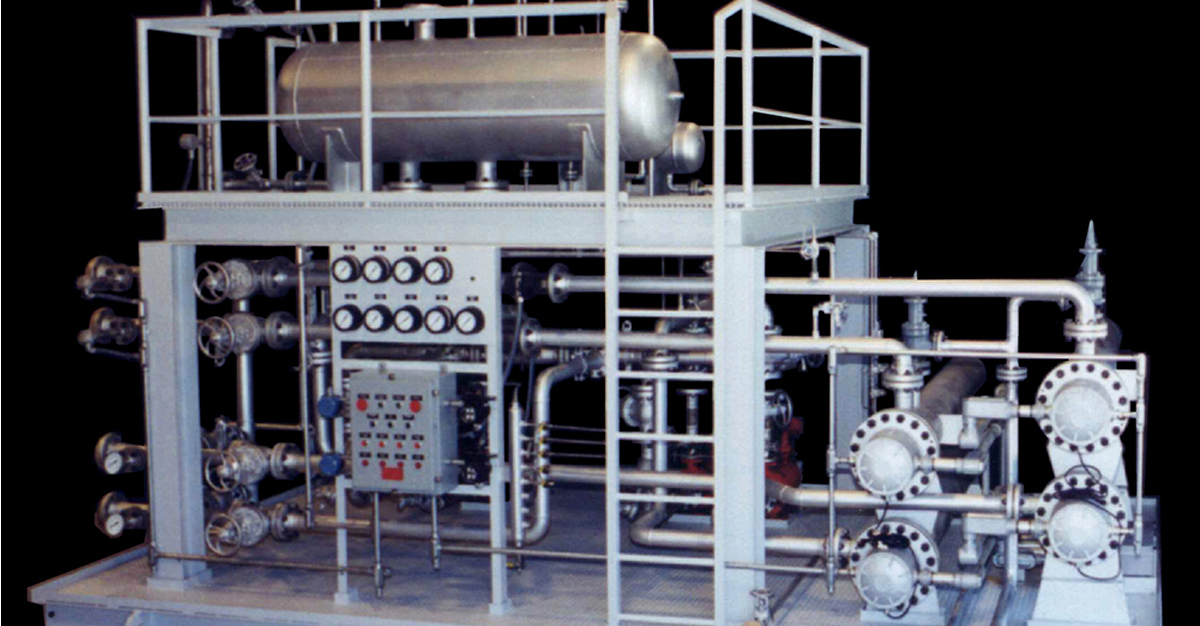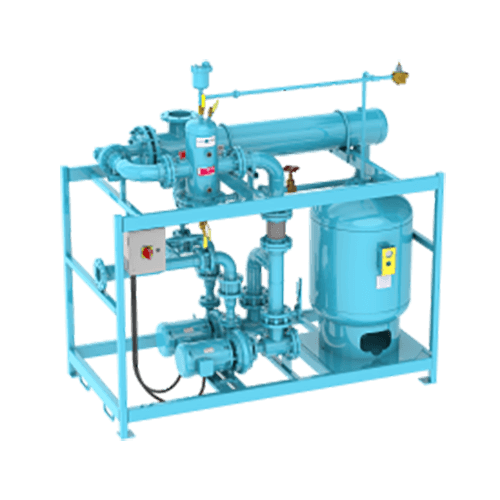Technologies in Heat Transfer Systems: What You Required to Know for Ideal Efficiency
Innovations in Heat transfer systems are transforming efficiency across various markets. Advanced products like graphene and nanofluids assure considerable renovations in thermal conductivity. The assimilation of IoT and device discovering provides opportunities for real-time tracking and improved energy performance. Nevertheless, the landscape of thermal administration is rapidly advancing (DVS Heat Transfer Systems). Recognizing these developments is necessary for attaining excellent system performance and sustainability in the future. What details advancements are shaping this makeover?
Arising Products for Boosted Heat Transfer

Advanced Heat Exchanger Styles
While standard Heat exchangers have actually offered their purpose in numerous applications, advanced layouts are now emerging to fulfill the increasing demands for performance and efficiency. These innovative designs, such as plate, shell-and-tube, and finned-tube Heat exchangers, include improved surface areas and improved circulation patterns to increase thermal transfer rates. Furthermore, small designs enable for minimized area requirements without compromising efficiency. Advanced products, such as compounds and corrosion-resistant alloys, in addition boost sturdiness and performance under severe conditions. Simulation innovations and computational liquid characteristics are significantly employed to fine-tune these styles, making certain peak Heat transfer qualities. As sectors look for to lessen energy consumption and optimize output, the fostering of advanced Heat exchanger layouts is essential in attaining these goals.
The Duty of Nanotechnology in Heat Transfer
Nanotechnology plays a necessary function in enhancing thermal conductivity within Heat transfer systems. By adjusting materials at the nanoscale, researchers have achieved considerable enhancements in energy efficiency. These developments not only enhance efficiency but additionally add to even more sustainable energy options.
Boosted Thermal Conductivity
Substantial advancements in thermal conductivity have actually arised through the application of nanotechnology, revolutionizing Heat transfer systems throughout various markets. By integrating nanoparticles right into Heat transfer fluids and products, researchers have achieved remarkable rises in thermal conductivity. These nanoparticles, such as carbon nanotubes, graphene, and steel oxides, improve the Heat transfer buildings as a result of their high area and unique thermal features. The resulting composites exhibit improved performance in applications ranging from electronics cooling systems to eco-friendly energy technologies. Additionally, the ability to tailor the size, form, and structure of nanoparticles enables maximized thermal administration services. Because of this, nanotechnology proceeds to play a critical duty in the growth of more effective and reliable Heat transfer systems, paving the means for boosted commercial applications.
Power Efficiency Improvements

Assimilation of IoT in Heat Transfer Systems
The assimilation of IoT in Heat transfer systems introduces the implementation of wise sensors that enhance functional performance. These sensors allow real-time data monitoring, enabling instant changes and optimizations. This technical advancement has the possible to substantially enhance performance and power management in Heat transfer applications.
Smart Sensors Implementation
As Heat transfer systems evolve, the assimilation of clever sensing units through the Web of Things (IoT) has actually become a transformative technique. These sensing units make it possible for real-time monitoring of stress, temperature level, and circulation prices, enhancing system performance and reliability. By accumulating and transmitting information, they promote proactive upkeep, lowering the threat of system failings. In addition, clever sensors contribute to power savings by refining operational specifications based upon ecological conditions. Their capability to assess anomalies and fads allows for informed decision-making, making sure peak efficiency of Heat transfer systems. As sectors increasingly embrace this modern technology, the implementation of clever sensors stands check my reference to reinvent exactly how Heat transfer systems are managed, leading the way for better sustainability and improved performance results.
Real-Time Information Monitoring
Just how can real-time information keeping track of improve the efficiency of Heat transfer systems? By incorporating Net of Things (IoT) innovation, Heat transfer systems can utilize constant data collection from wise sensing units. This real-time surveillance enables for instant analysis of pressure, circulation, and temperature level rates, making it possible for drivers to determine ineffectiveness without delay. Changes can be made to maximize performance, reduce power consumption, and extend equipment life-span. Additionally, predictive maintenance can be implemented, decreasing unforeseen downtime and costly fixings. The capability to envision efficiency metrics via control panels improves decision-making, fostering a positive approach to system management. Eventually, real-time data monitoring not just boosts functional effectiveness however also adds to sustainability objectives within industrial procedures.
Power Effectiveness and Sustainability Trends
Energy effectiveness and sustainability patterns are improving the landscape of Heat transfer systems, driving development and compliance across various industries. Organizations are significantly prioritizing energy-efficient layouts to minimize operational costs and reduce ecological influences. The integration of sustainable power resources is ending up being more common, enabling Heat transfer systems to run sustainably while fulfilling governing demands. Additionally, developments in innovations and products advertise lower energy intake and enhance overall efficiency. Lifecycle evaluations are likewise acquiring traction, permitting business to review the ecological influence of Heat transfer systems from production to disposal. This concentrate on sustainability not just supports business responsibility however likewise placements organizations competitively in a market where customers progressively favor environmentally friendly remedies. Energy effectiveness and sustainability stay essential factors to consider for future developments in Heat transfer modern technology.
Advancements in Thermal Monitoring Solutions
While the need for reliable Heat transfer proceeds to climb, developments in thermal monitoring services are emerging to deal with both performance and sustainability difficulties. Advanced materials, such as stage change products and nanofluids, are being developed to boost Heat transfer performance - DVS Heat Transfer Systems. These products improve thermal conductivity and allow for far better temperature level regulation in different applications. Additionally, modern technologies like active thermal control systems are obtaining traction, allowing real-time adjustments to handle Heat circulation properly. These systems contribute to energy cost savings and decrease the ecological influence of thermal procedures. Furthermore, the integration of IoT in thermal administration promotes monitoring and anticipating upkeep, guaranteeing maximized performance and long life of Heat transfer systems. In general, these advancements stand for substantial strides toward more sustainable thermal administration methods
Future Instructions in Heat Transfer Modern Technology
Arising advancements in thermal monitoring options signal an appealing future for Heat transfer technology. Researchers are significantly concentrating on developing materials with remarkable thermal conductivity and boosted power performance. Innovations such as nanofluids, which consist of put on hold nanoparticles, use substantial improvements in Heat transfer efficiency. Additionally, the integration of wise products that adjust to varying temperature problems is acquiring traction, enabling more efficient and responsive systems. The surge of additive production methods is also making it possible for the design of complex Heat exchanger geometries that optimize fluid circulation. The execution of device discovering algorithms is prepared for to revolutionize the optimization of Heat transfer systems, promoting anticipating upkeep and performance improvement. Collectively, these improvements are poised to change the landscape of Heat transfer technologies in different markets.

Often Asked Inquiries

Exactly how Do I Select the Right Heat Transfer System for My Application?
Selecting the best Heat transfer system entails reviewing application needs, consisting of temperature varieties, fluid homes, and effectiveness demands. Assessing system kinds, upkeep considerations, and cost-effectiveness likewise plays an important role in making a notified decision.
What Are the Upkeep Requirements for Advanced Heat Exchangers?
Upkeep requirements for sophisticated Heat exchangers usually include normal examinations, monitoring for leakages, cleaning of surfaces, published here and ensuring ideal circulation rates. Sticking to producer standards assurances effective procedure and prolongs the devices's life-span.
How Do Environmental Aspects Influence Heat Transfer Effectiveness?
Environmental elements considerably affect Heat transfer performance. Variations in moisture, airflow, and temperature level influence thermal conductivity and convective Heat transfer, ultimately influencing system efficiency and necessitating consideration during the style and operation of Heat transfer systems.
What Security Criteria Put On Heat Transfer Equipments?
Safety standards for Heat transfer systems usually consist of guidelines from companies such as ASME and ASTM. DVS Heat Transfer Systems. These criteria address products, style, and functional methods to guarantee dependability, efficiency, and security versus risks in different applications
How Can I Repair Typical Heat Transfer System Issues?
Repairing usual Heat transfer system problems entails looking for leakages, making sure proper fluid flow, inspecting insulation stability, and validating temperature go to the website differentials. Determining these variables can help keep system effectiveness and avoid further complications.
Nanotechnology plays an important role in improving thermal conductivity within Heat transfer systems. Substantial advancements in thermal conductivity have actually arised with the application of nanotechnology, changing Heat transfer systems throughout different industries. Improvements in thermal conductivity with nanotechnology have paved the method for impressive renovations in power effectiveness within Heat transfer systems. Energy performance and sustainability patterns are improving the landscape of Heat transfer systems, driving development and compliance across different markets. The integration of IoT in thermal monitoring promotes surveillance and predictive maintenance, guaranteeing optimized efficiency and durability of Heat transfer systems.